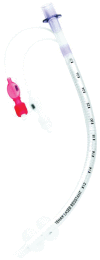New Medical Device and Therapeutic Approvals in Otolaryngology: State of the Art Review of 2021
- PMID: 36171808
- PMCID: PMC9511340
- DOI: 10.1177/2473974X221126495
New Medical Device and Therapeutic Approvals in Otolaryngology: State of the Art Review of 2021
Abstract
Objective: To evaluate new medical devices and drugs pertinent to otolaryngology-head and neck surgery that were approved by the Food and Drug Administration (FDA) in 2021.
Data sources: Publicly available FDA device and drug approvals from ENT (ear, nose, and throat), anesthesia, neurosurgery, plastic surgery, and general surgery FDA committees.
Review methods: FDA device and therapeutic approvals were identified and reviewed by members of the American Academy of Otolaryngology-Head and Neck Surgery's Medical Devices and Drugs Committee. Two independent reviewers assessed the relevance of devices and drugs to otolaryngologists. Medical devices and drugs were then allocated to their respective subspecialty fields for critical review based on available scientific literature.
Conclusions: The Medical Devices and Drugs Committee reviewed 1153 devices and 52 novel drugs that received FDA approval in 2021 (67 ENT, 106 anesthesia, 618 general surgery and plastic surgery, 362 neurosurgery). Twenty-three devices and 1 therapeutic agent relevant to otolaryngology were included in the state of the art review. Advances spanned all subspecialties, including over-the-counter hearing aid options in otology, expanding treatment options for rhinitis in rhinology, innovative laser-safe endotracheal tubes in laryngology, novel facial rejuvenation and implant technology in facial plastic surgery, and advances in noninvasive and surgical treatment options for obstructive sleep apnea.
Implications for practice: FDA approvals for new technology and pharmaceuticals present new opportunities across subspecialties in otolaryngology. Clinicians' nuanced understanding of the safety, advantages, and limitations of these innovations ensures ongoing progress in patient care.
Keywords: FDA; drugs; medical devices; therapeutic.
© The Authors 2022.
Figures









References
-
- iotaSOFT TM Insertion System Instructions for Use. Published October 26, 2021. https://iotamotion.com/wp-content/uploads/iotaSOFT-Insertion-System-Inst...
Publication types
Grants and funding
LinkOut - more resources
Full Text Sources
Research Materials
Miscellaneous

